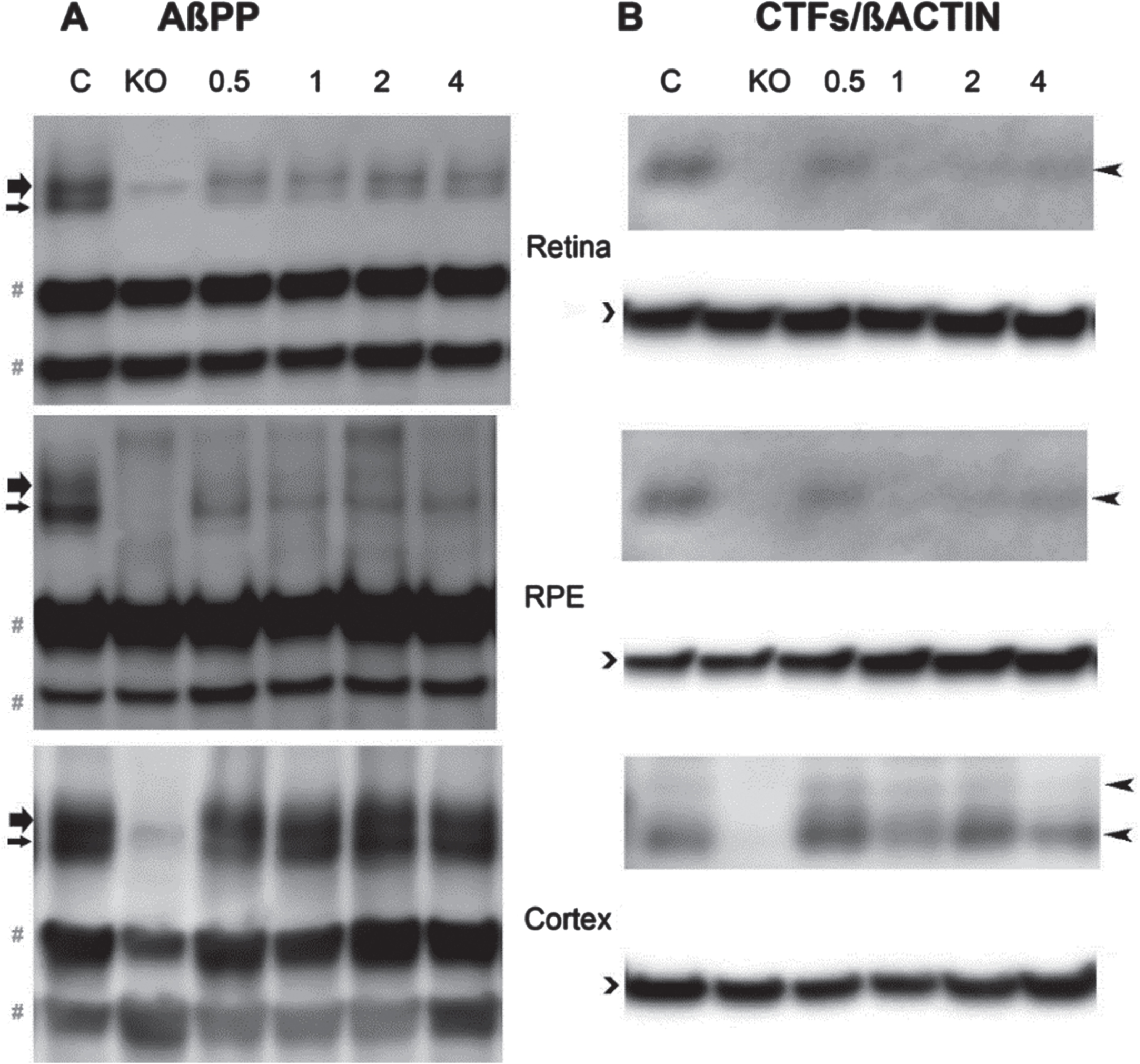Erratum to: Differential accumulation of secreted AbetaPP metabolites in ocular fluids
Annamalai Prakasam, Muthuswamy Anusuyadevi, Zsolt Ablonczy, Nigel H. Greig, Abdul Fauq, Kosagisharaf Jagannatha Rao, Miguel A. Pappolla and Kumar Sambamurti
[Journal of Alzheimer’s Disease, 20(4) (2010), pp. 1243-1253, 10.3233/JAD-2010-100210]
https://content.iospress.com/articles/journal-of-alzheimers-disease/jad100210
Due to concern that the lane with the knockout mouse samples had been cut and moved to create a continuum between the control and cycloheximide-treated mice, the figures from the original blots have been remade by the authors. There is no change in the data interpretation or research findings. Some key differences in the current figures are that a larger portion of the blot is trimmed to show the nonspecific bands in addition to AβPP. In addition, three panels show β-actin bands for the retina, RPE, and cortex. The new figure can be found below.
Fig. 1
AβPP and CTFs are rapidly turned over in the eye and the brain.

Nontransgenic BALBc mice (10–12 weeks) were administered saline (C) or cycloheximide, and the tissues were collected at the indicated times (0.5–4 h) after treatment. Tissues from AβPP knockout mice (KO) were included as controls. Retina, retinal pigment epithelium (RPE), and cortex samples were analyzed by Western blotting with the O443 antibody to detect AβPP (Full-length protein identified by arrows (Thin = immature; Thick = mature)) in the left; A) and CTFs (Arrowheads on the right; B). Beta-Actin was used as a control (Open arrows in the middle; B), remaining stable throughout the treatment. O443 detects nonspecific bands in the retina, RPE, and cortex (# symbols on the left; A). However, these bands remain in the AβPP-KO mice, demonstrating their non-AβPP origin, allowing us to focus on the relevant AβPP and CTF bands.




